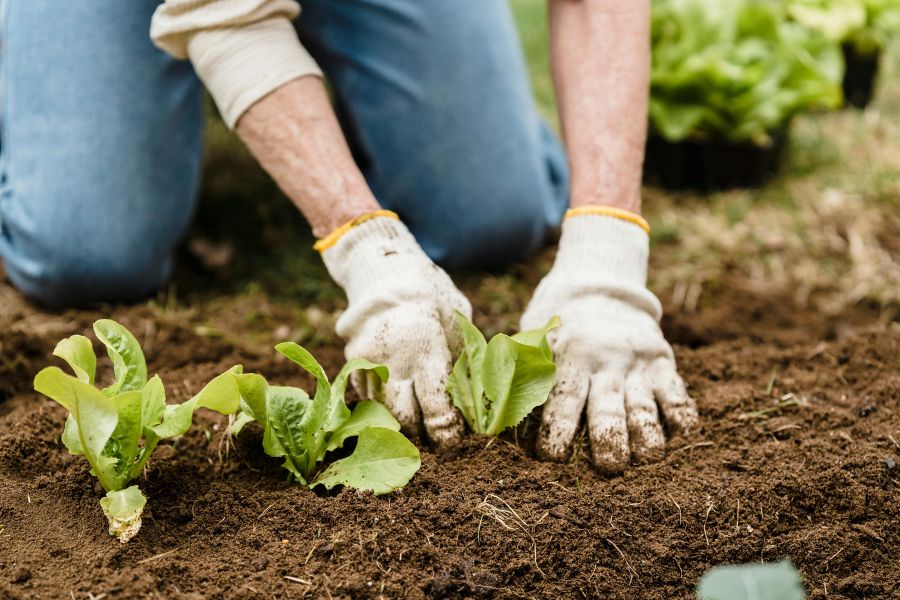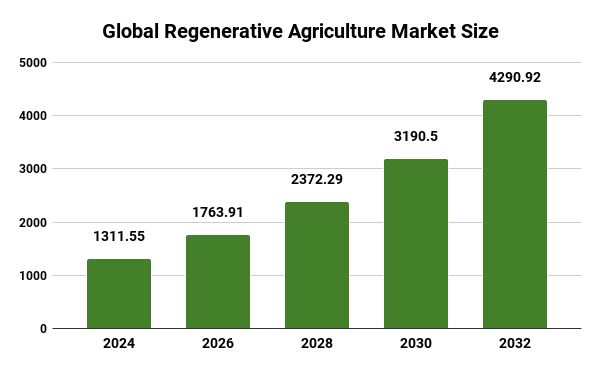
Regenerative farming is emerging as a key player in India’s strategy to achieve its 2070 net-zero emission target. By focusing on soil health and biodiversity, this innovative farming practice aims to restore ecosystems and ensure sustainable food production. With over 29% of India’s land suffering from degradation, regenerative practices offer a crucial solution to address water scarcity and climate variability.
Despite challenges such as limited knowledge, reduced initial yields, and farmer skepticism, methods like no-till farming and agroforestry hold the potential to enhance resilience, yield, and income. Additionally, these practices help mitigate climate change, foster thriving communities, and strengthen economies.
The concept of “Regenerative Agriculture,” coined in the 1980s by organic pioneer Robert Rodale, is designed to enhance ecosystem services and restore food and farming systems. It focuses on regenerating topsoil, boosting biodiversity, and improving water cycles while building resilience against climate change. This holistic approach seeks to heal the earth by revitalizing soil health and surrounding ecosystems.
Regenerative agriculture employs techniques such as permaculture, conservation tillage, cover crops, crop rotation, composting, mobile animal shelters, and pasture cropping. These methods not only enhance food production but also improve farm income and topsoil quality.
Sanjay Joshie, Head of Climate Change, Agriculture, and Livelihoods at ECHO India, emphasizes the need for agriculture to align with nature for long-term sustainability. “For agriculture to thrive and support India’s population and economy, we must work in harmony with nature,” he asserts.
Soil scientists warn that the global rate of soil destruction is alarming. Without intervention, we face catastrophic consequences within 50 years, including public health issues from nutrient-poor food and insufficient arable topsoil. A UN report highlights the urgency of protecting and regenerating our 4 billion acres of farmland, 8 billion acres of pasture, and 10 billion acres of forest to ensure global food security and prevent biodiversity loss.
In India, the agricultural sector is declining due to extreme climate patterns, poor groundwater conditions, acidified soil, pests, and deteriorating ecosystems. As of 2023, over 29% of India’s geographical area is degraded, with topsoil loss from erosion and water scarcity exacerbating the issue. The formation of topsoil, rich in organic matter and microorganisms, takes centuries, yet its erosion outpaces formation. Additionally, with 91% of freshwater used for agriculture, 17 states face over-exploitation of groundwater resources.
Regenerative agriculture offers a transformative solution by developing healthy soil that can produce nutrient-dense food and enhance land quality. This approach fosters productive farms, healthy communities, and strong economies.
Joshie adds, “The Green Revolution transformed India’s food security and export capabilities, but it also led to groundwater and soil depletion. Regenerative agriculture, while not a complete solution, is a positive step towards revitalizing our agricultural ecosystem and maintaining ecological balance.”

Globally, regenerative agriculture is gaining traction as a sustainable alternative that prioritizes biodiversity, soil health, and ecosystem resilience. The regenerative agriculture market, valued at USD 975.20 million in 2022, is projected to grow to USD 4,290.92 million by 2032, with a CAGR of 15.97% from 2023 to 2032.
Transitioning to regenerative agriculture faces challenges such as:
Sunil Khairnar, an agribusiness expert, calls for accelerated adoption. He suggests government subsidies, grants, and low-interest loans to support regenerative practices and enhance agricultural extension services.
Despite its nascent stage, regenerative farming offers significant potential for India’s 2070 net-zero target. Solidaridad’s analysis shows that small farmers can sequester 1 to 4 tons of carbon per hectare, offering a potential revenue source. FMCG companies are increasingly partnering with suppliers who practice regenerative methods.
Indian companies like Sai Sustainable Agro, Krishi Janai PBC, and Bioprime Agrisolutions are leading efforts to support regenerative practices. These initiatives help transform degraded lands, connect farmers with consumers, and enhance climate resilience.
Regenerative agriculture is a promising practice that extends beyond conventional methods. By restoring ecosystems and increasing crop resilience, it can help farmers mitigate climate change and boost income. Widespread adoption will require support from policymakers, businesses, and consumers, but it holds the key to a sustainable and resilient food system for future generations.
© Trade Promotion council of India. All Rights Reserved.
Developed by Abacus Desk